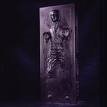 I am currently reading the Old Testament from beginning to end, and I have run into a curious ceremony that I did some research on in order to try to make sense of it. It is first mentioned in Exodus in the ordination of Aaron and then repeated in Leviticus, which is where I am now.
I am currently reading the Old Testament from beginning to end, and I have run into a curious ceremony that I did some research on in order to try to make sense of it. It is first mentioned in Exodus in the ordination of Aaron and then repeated in Leviticus, which is where I am now.Exodus 29:20: Then shalt thou kill the ram, and take of his blood, and put it upon the tip of the right ear of Aaron, and upon the tip of the right ear of his sons, and upon the thumb of their right hand, and upon the great toe of their right foot, and sprinkle the blood upon the altar round about.
Leviticus 8:23: And he slew it; and Moses took of the blood of it, and put it upon the tip of Aaron's right ear, and upon the thumb of his right hand, and upon the great toe of his right foot.
 From a Jewish website I obtained this interesting historical reference in which Philo comments on the significance of this ordination ceremony for the priests:
From a Jewish website I obtained this interesting historical reference in which Philo comments on the significance of this ordination ceremony for the priests:“The fully consecrated [for the priesthood] must be pure in words and actions and in his whole life; for words are judged by hearing, the hand is the symbol of action, and the foot of the pilgrimage of life” (Philo, On the Life of Moses, 2:150, as quoted in The Torah: A Modern Commentary, ed. W. Gunther Plaut, p. 804).This reminds me of the qualifications for the office of holy ministry, especially those given in 1 Timothy 3. But there is a further reference to this strange ceremony later in Leviticus which has nothing to do with ordination. This third reference is what sent me to studying. It is part of the cleansing of Lepers:
Leviticus 14:14: And the priest shall take some of the blood of the trespass offering, and the priest shall put it upon the tip of the right ear of him that is to be cleansed, and upon the thumb of his right hand, and upon the great toe of his right foot.Of course, the question that hit me when I got to this verse is, why is this strange "ordination ceremony" applied
 to lepers? Here I believe we are drawn to the fuller meaning of this strange ceremony as it applies to Christ. The leper signifies the sinner. Here we are looking simply at the action of the blood of atonement as an Old Testament means of grace. I believe the blood is applied to the very tips of these extremities (both to lepers and to Aaron) showing that the cleansing brought by the blood of Christ extends over the entire Christian - that it is all inclusive and sufficient.
to lepers? Here I believe we are drawn to the fuller meaning of this strange ceremony as it applies to Christ. The leper signifies the sinner. Here we are looking simply at the action of the blood of atonement as an Old Testament means of grace. I believe the blood is applied to the very tips of these extremities (both to lepers and to Aaron) showing that the cleansing brought by the blood of Christ extends over the entire Christian - that it is all inclusive and sufficient.But why not bathe them, head to toe, in the blood of the sacrifice? Or how about just applying the blood to the leprosy? I believe the application only to the tips of these extremities represents the forensic nature of justification as an imputation - that is, a declaration of righteousness. And, of course, the declaration of God accomplishes what it says: the entire sinner is covered, and cleansed, by the atonement. Think of the response of Jesus to Peter when he says "not just my feet, but my hands and head also!" He whom the cleansing and sanctifying power of Jesus in His redemption has touched is altogether clean and holy in the sight of God.
 Applying this back to the consecration for the OHM, we see that it is Christ's all-inclusive atoning sacrifice that sanctifies the pastor in the same way in which he then serves in his calling to apply the all-inclusive/sufficient means of grace to us lepers (sinners) as well - passing on what he has received, just as Paul says in 1 Corinthians 15:3-4:
Applying this back to the consecration for the OHM, we see that it is Christ's all-inclusive atoning sacrifice that sanctifies the pastor in the same way in which he then serves in his calling to apply the all-inclusive/sufficient means of grace to us lepers (sinners) as well - passing on what he has received, just as Paul says in 1 Corinthians 15:3-4:For I delivered unto you first of all that which I also received, how that Christ died for our sins according to the scriptures; And that he was buried, and that he rose again the third day according to the scriptures...And here we see true apostolic succession - the passing on of the pure doctrine of grace from man to man.
Thanks be to God!










1 comment:
This was fantastic! One to file away and keep.
Post a Comment